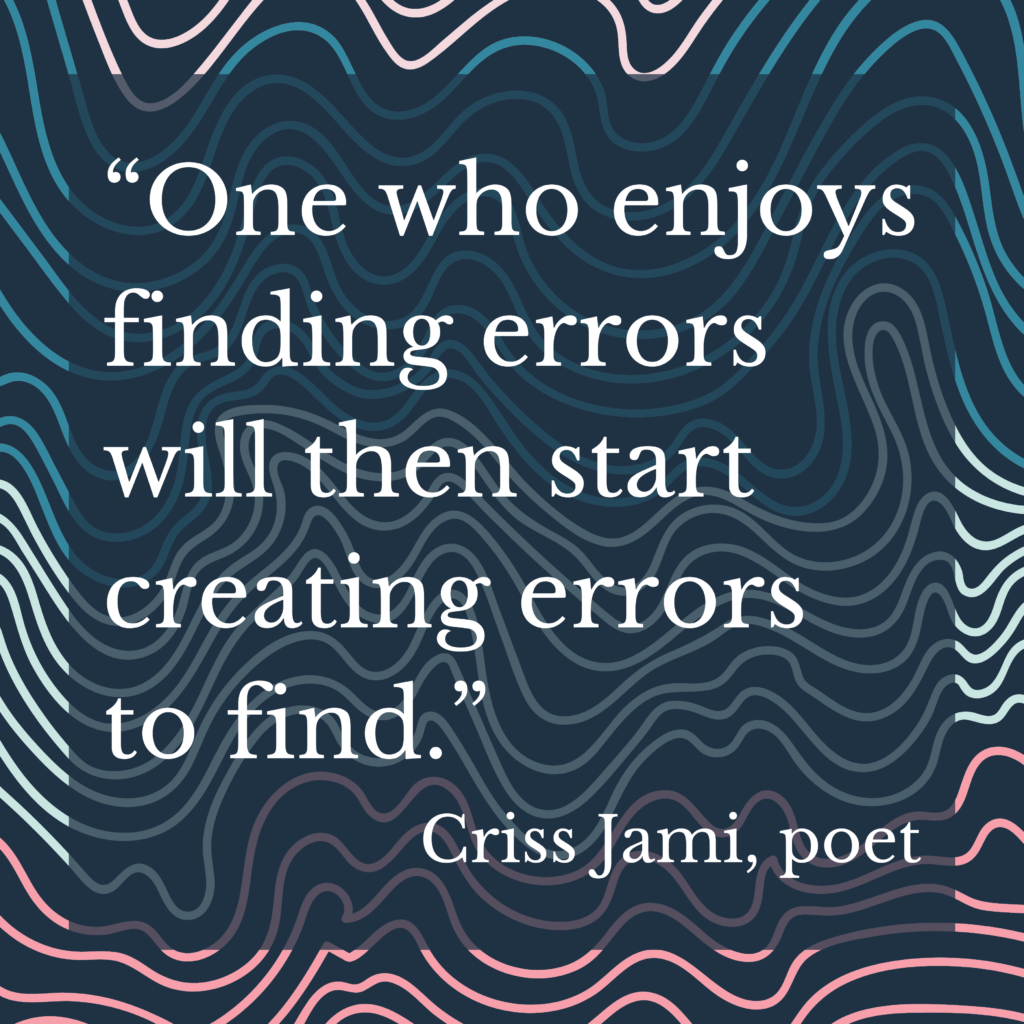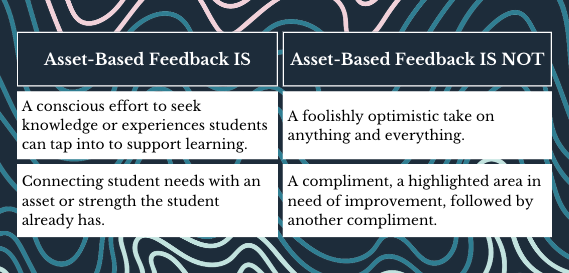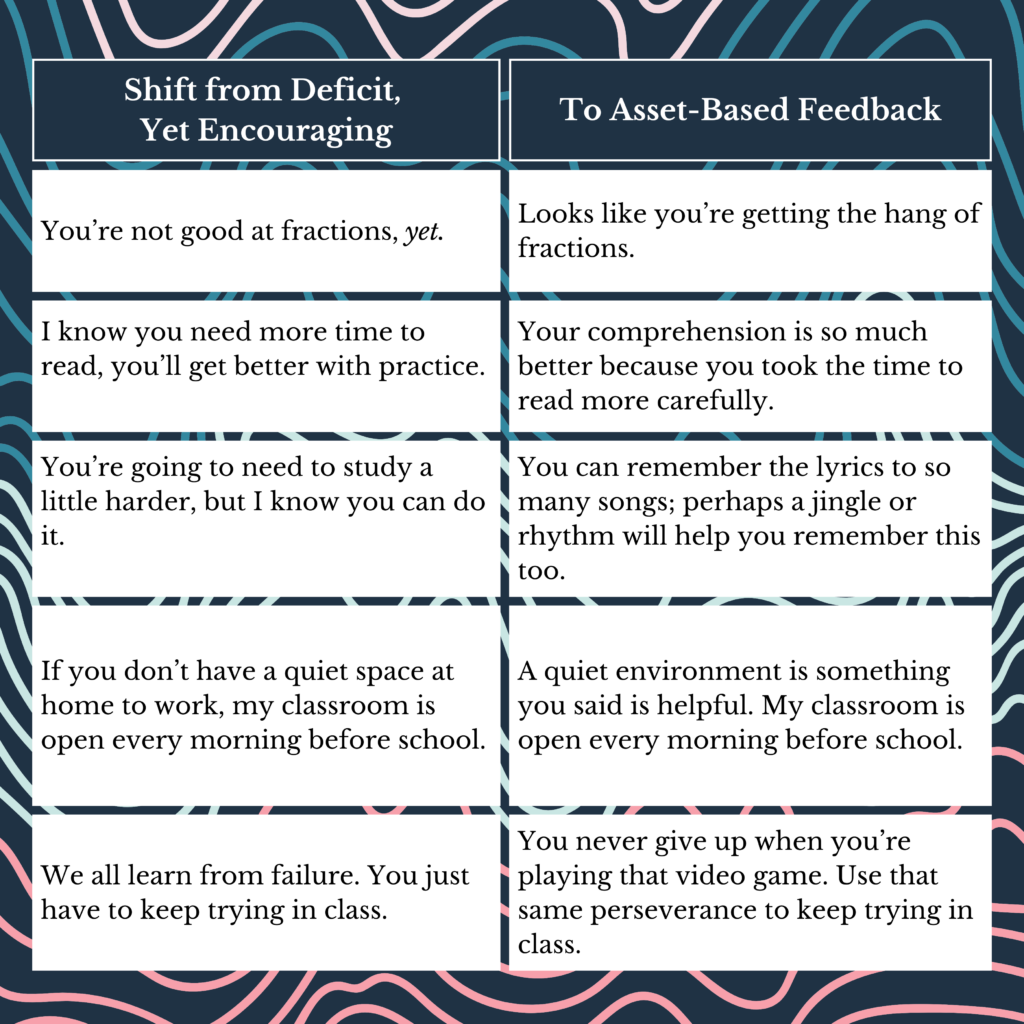What is asset-based feedback and why does it matter? Our brains are inclined to notice deficiencies, negativity, or areas that need improvement before strengths, positivity, or success. This means that your encouraging feedback might be based on where students are unsuccessful; this is linked to deficit thinking. Let’s dig into how we can shift our feedback from focusing on what students “can’t” do yet to leveraging what they “can” do, through asset-based thinking.
What Is Negativity Bias?
Our brains are designed to notice negative information more quickly and intensely than positive information. Scientists connect this favor for negativity all the way back to cave-dwelling days. You have probably heard of the fight, flight, freeze, or fawn response that instinctively kicks in when danger is sensed. These involuntary reactions to fear present in the form of physiological changes your brain triggers before you can even process what is happening.
In today’s day, we don’t encounter sabertooth tigers, but any type of threat, even social and emotional ones, can trigger these responses. So, by design, we’re wired to prioritize negative situations over positive ones. Overall, this is very helpful to our survival. Imagine if our ancestors were distracted by a beautiful sunset when faced with a predator. The precious time redirecting attention to the danger, then determining what to do, could be fatal.
This basic structure of how our bodies work carries over into much less threatening circumstances. The term used to describe our attention to “what’s wrong?” is called negativity bias.
What Is Deficit Thinking?
When problems consistently hone in on barriers and challenges students face, we call this deficit thinking. Surface-level understanding of powerful efforts such as using a growth mindset is revealed when the encouragement we offer students is rooted in their deficits.
In terms of the classroom, negativity bias might be noticed in the form of paying more attention to students who are off task, looking for errors in student work, and focusing exclusively on what students need. Certainly, these things should not be ignored – and neither should students who are focused, successful in student work, and possess unique gifts, talents, and experiences.
The existential philosopher and poet Criss Jami, said, “One who enjoys finding errors will then start creating errors to find.” Naming disadvantages or areas of weakness emphasizes them. Let’s harness our ability to notice by turning our attention to what students can do as the foundation for feedback.

Think about how many structures exist in education that call our attention to deficits. Needs assessments, intervention systems, and the like have the specific purpose of finding, analyzing, and fixing what students can’t do yet. Please do not overgeneralize formative assessments and structures that provide support for student success as negative. They aren’t.
Let me be clear, it is necessary to define problems in order to solve them. Eliminating needs assessments or intervention systems would not only go against oodles of research, but it would only make educators’ jobs more challenging.
What Is Asset-Based Feedback?
We can think of asset-based thinking as a member of the positive thinking family. However, it’s not a foolishly optimistic take on anything and everything. It is a conscious effort to seek knowledge or experiences that students have to tap into to get a running start on learning. It requires an awareness of what knowledge or understanding students need to have while simultaneously connecting those needs with an asset or strength the student already has. It’s the explicit connection between the asset and the need that makes asset-based feedback different from a feedback sandwich.
A feedback sandwich starts with a compliment, then highlights an area in need of improvement, then closes with another compliment. While it feels nice to hear two praise statements, if the compliment isn’t directly related to the need, it’s not much good for the learner in regard to using strengths as assets.

How Do We Shift to Asset-Based Feedback?
That said, we have a superpower we can include in efforts to boost student learning. It includes the assets students have to make connections and build on success. We can make more progress if we begin with strengths rather than fill in the holes of failure.
In the book, “Amply Learner Voice,” coming this winter, a side-by-side comparison of two versions of similar feedback is offered in the table below. Column one lists feedback a teacher might use to encourage their students, but through deficit thinking. The same message, simply shifted to focusing on students’ assets is offered in the corresponding row in column two.

Start Student Learning “Above Ground”
It feels very different when learning begins in the hole, in other words, a deficit, versus setting the starting point above ground by highlighting what the student can already do that will be helpful in their current learning situation. Encouraging students to activate their strengths will not only empower them to support their own learning, but when students see that you recognize their strong points, they will know they are seen and honored by their teacher.
Want to learn more from Connie? Don’t miss her sessions at TCEA 2023! She’ll be discussing how anxiety impacts learning and how love languages can impact communication. Interested? Sign up before January 10 for discounted pricing!

